Current Affairs (14th August 2021)
World Elephant Day
The Hindu
GS 3 : Environment and Conservation
Context:
- The Ministry of Environment, Forest and Climate Change released the population estimation protocol to be adopted in the All-India elephant and tiger population estimation in 2022 on the World Elephant Day (12th August).
About:
- As per the new protocol, India will move to a system that will count tigers and elephants as part of a common survey.
- The tiger survey is usually held once in four years and elephants are counted once in five years.
- This method would significantly save cost given that 90% of the area occupied by elephants and tigers is common.
Elephants in India:
- According to the last count in 2017, there were 29,964 elephants in India. This is a slight increase from 2012’s mean of 29,576 elephants.

- Threats:Habitat loss, fragmentation, human-elephant conflict, poaching and illegal trade of elephants.
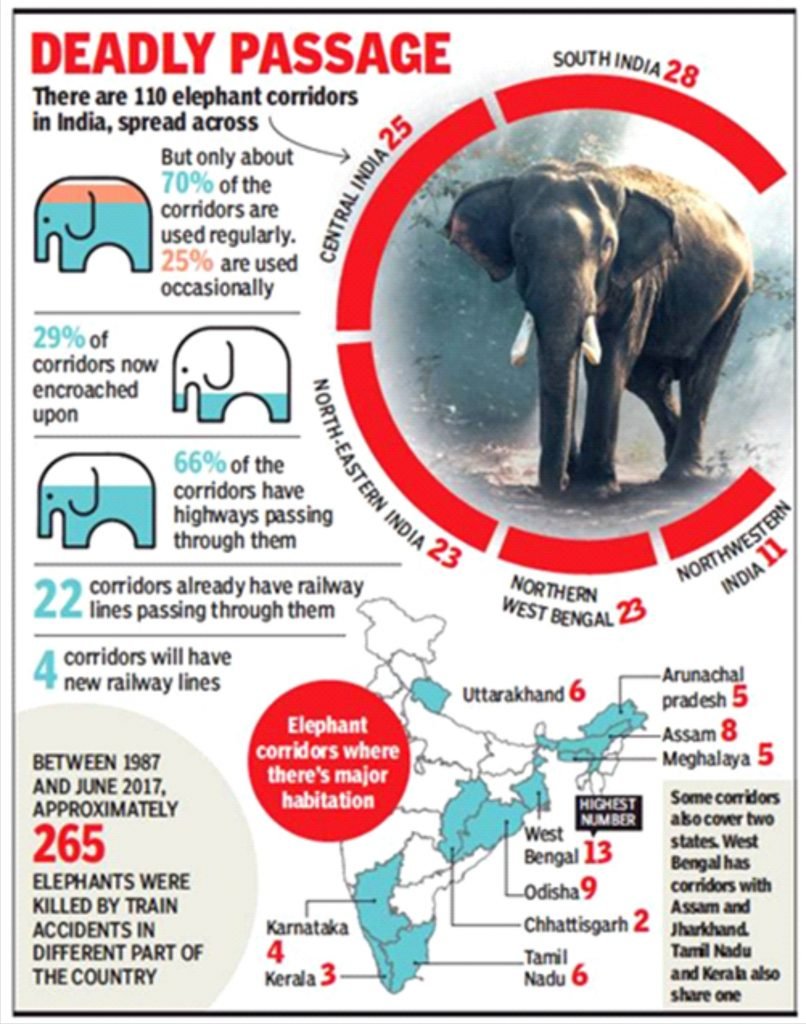
Asian Elephants:
-
- They are polygynous, with males and females exhibiting different morphologies and adult lifestyles.
- They are the largest land mammals on the Asian continent.
- They are extremely sociable, forming groups of six to seven related females that are led by the oldest female, the matriarch.
- It lives in forested regions of India and throughout Southeast Asia, including Myanmar, Thailand, Cambodia, and Laos.
- There are three subspecies of Asian elephants which are the Indian, Sumatran and Sri Lankan.
- IUCN Status: Endangered
- Protection:
- It is protected under Schedule I of the Wildlife Protection Act, 1972.
- It is included in Appendix I of the Convention on International Trade in Endangered Species of Wild Fauna and Flora (CITES).
- Status in India:
- India is home to the largest number of Asiatic Elephants. There are around 28,000 elephants in India with around 25% of them in Karnataka.
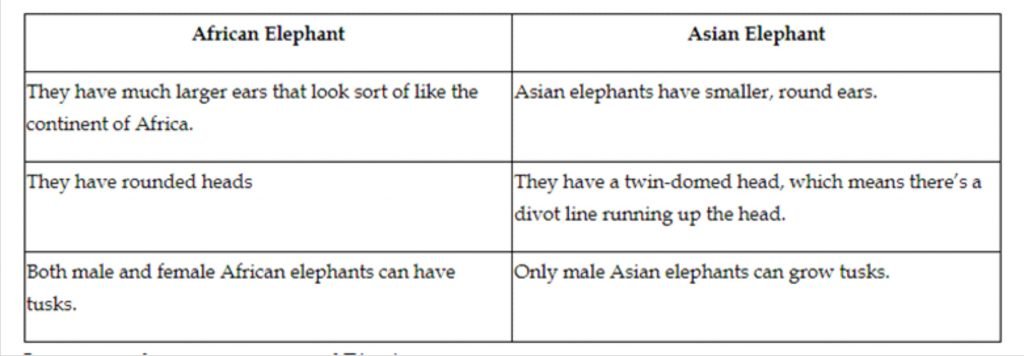
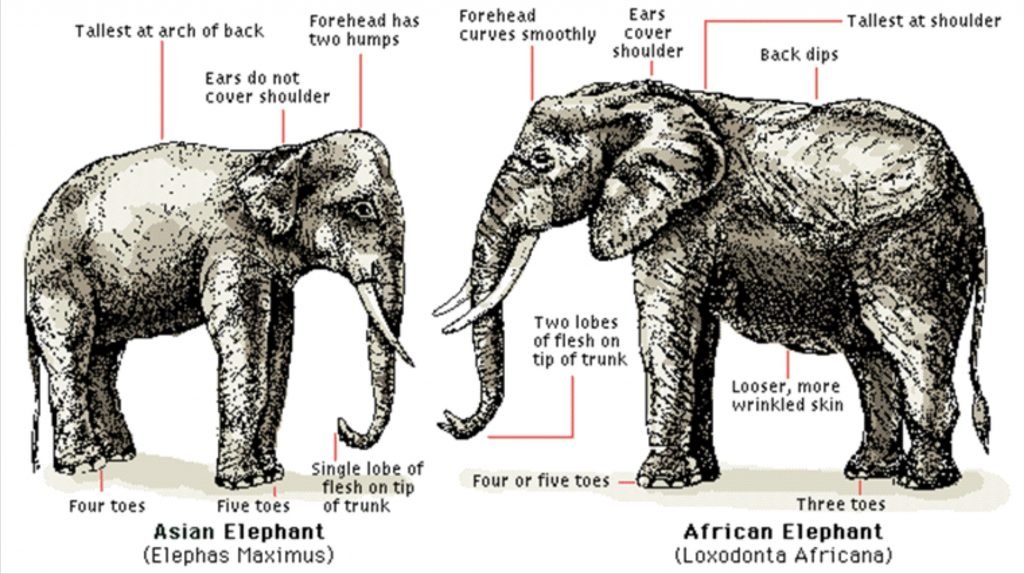
India’s pollution control boards
Down to Earth
GS 3 : Environment
Context:
- The state pollution control boards (SPCB) and pollution control committees (PCC) in India generate large quantities of data every day, online or manually. Most of them, however, take minimal initiative to disclose the information in public domain.
- It was highlighted by new report by Centre for Science and Environment (CSE), a Delhi-based non-profit.
- The assessment is an effort to encourage SPCBs/PCCs to place their information in the public domain.
Key points:
- Information on waste: As many as 11 SPCB/PCCs have not shared information on plastic waste information, 14 have not shared data on municipal solid waste, 10 have not displayed information on hazardous waste information and nine have not disclosed e-waste details on their websites.
- Continuous Emission Monitoring Systems data not made public in 13 states / UTs: Andaman & Nicobar, Chandigarh, Daman & Diu, Maharashtra, Manipur, Rajasthan, Nagaland, Sikkim, Uttarakhand, Uttar Pradesh, and Tripura have no provision for making continuous emission monitoring systems (CEMS) data available in the public domain.
- This is despite the Supreme Court order and a notification fromUnion Ministry of Environment, Forests and Climate Change under the Environment (Protection) Act, 1986 mandating the same.
- Only five states have shared soft copies of notices online: J&K, Rajasthan, Telangana, Uttarakhand and West Bengal have shared soft copies of directions, show cause and closure notices issued by the pollution bodies on their websites.
- Only five boards has shared minutes of board meetings: It is mandatory for SPCBs to meet at least once every three months to discuss action plans, compliance and monitoring, functioning of the board and stronger enforcement of laws.
- Details from public hearings provided only by nine SPCBs/PCCs: Karnataka, Telangana, Delhi, Gujarat, Kerala, Punjab, Rajasthan, Goa, and Mizoram are the only places with complete public hearing sections on their pollution body websites.
- The section should include the executive summary, draft Environment Impact Assessment report of projects and minutes of meetings of public hearings on the project.
- The format in which data is presented on the websites and annual reports of the SPCBs/PCCs was not uniform. The information was also difficult to find on the portals of certain boards because of poor navigation support.
- Only 12 states have shared their latest annual report on their websites
- Inspection & compliance reports: In the annual reports, only Himachal Pradesh, Karnataka, Odisha, Tamil Nadu and West Bengal have shared information on the inspection conducted by the pollution control boards. Haryana and Karnataka are the only places to have shared information on compliance status of industries in their reports.
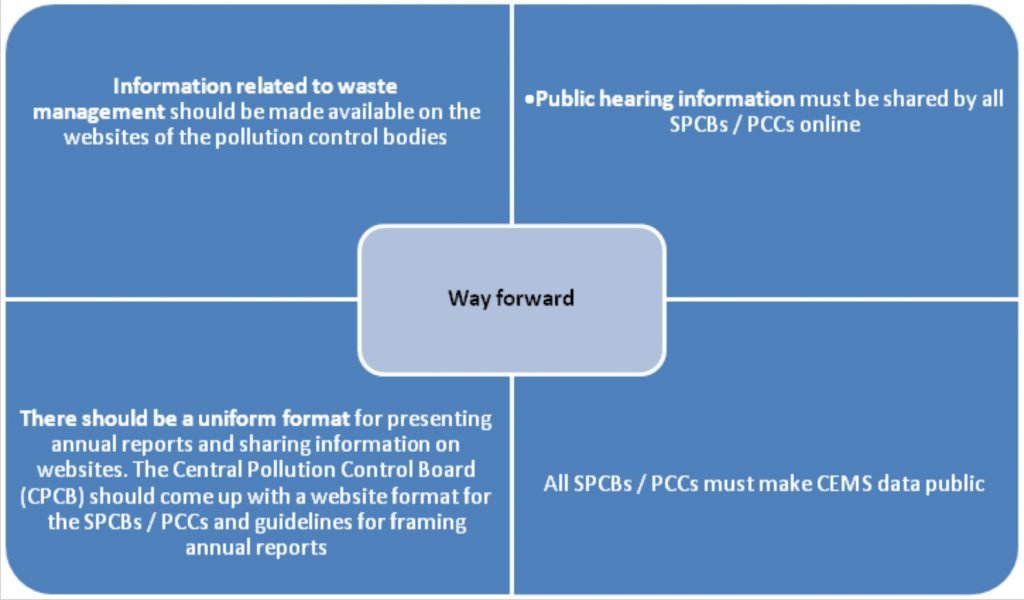
Landslides in Himachal Pradesh
The Hindu
GS 3 : Environment
Context:
- Himachal Pradesh faces rising instability from environmental factors such as climate change, heavy rainfall, and landslides.
- The rising threat calls for a renewed approach to the developmental designs in the State.
About:
- Landslip/Lanslide in the Kinnaur district, Himachal Pradesh killed at least 14 people and buried several others.
- Severe catastrophe as mud, rocks and debris rained down on vehicles.
- A fortnight back, a similar disaster killed a group of tourists.
Recurring threats:
- Landslips have become more common.Seismic events threaten to increase their frequency and aggravate the impact.
- The Landslide Hazard Zonation Map of India marks over 70% of Himachal Pradesh as ‘high risk’ and 14% as ‘severe’ to ‘very high risk’.
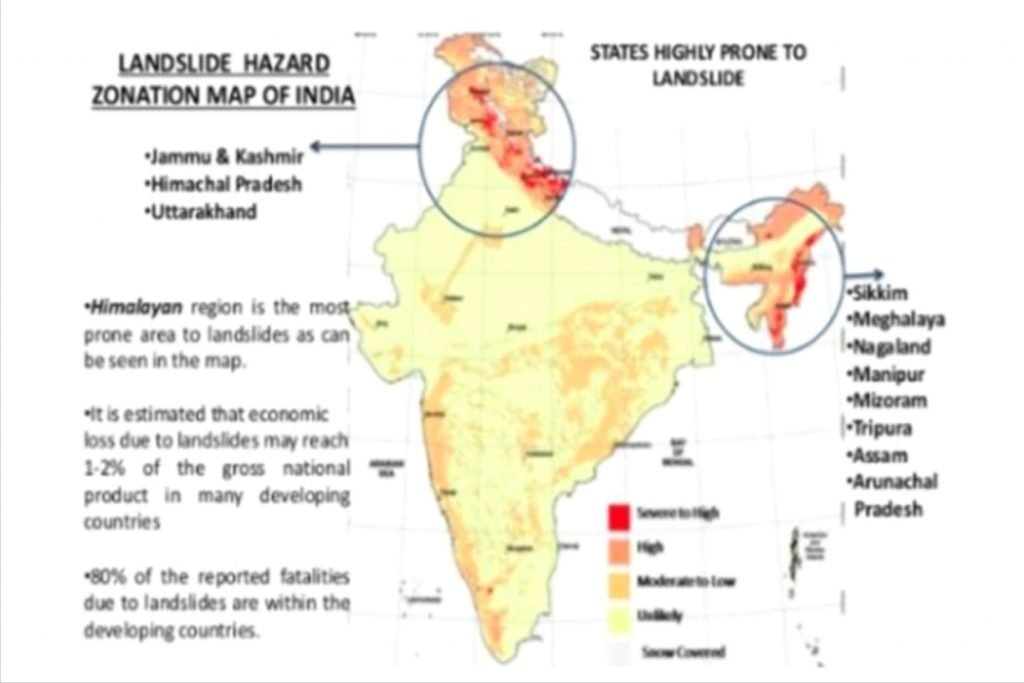
- Earthquakes – Mountains here are geologically young and therefore active (unstable).
- 32% of the State is categorised as a high damage risk zone for seismicity.
- A developmental model that prioritises heavily engineered structures such as
- Dams and hydropower:
- It involves rock blasting, tree felling and inundating large spaces clearly jeopardise the integrity of mountain slopes;
- Roads developed along the slopes face the brunt of the impact, as the Kinnaur landslides show.
- In some cases, the roads themselves have been destroyed.
- Dams and hydropower:
Causes:
- Himachal’s mountain slopes experience seismicity and rain-induced stresses.
- Heavily engineered structures such as dams and hydropower (involve rock blasting, tree felling and inundating large spaces), building roads.
- With greater rainfall and cloudburst activity, Himachal Pradesh is bound to face greater uncertainty.
Way Forward:
- A new and redesigned development paradigm.
- Greater caution in pursuing disruptive projects, particularly hydropower.
- An updated action plan on climate change that goes beyond disaster management.
- Long-term remedial measures for the key hazards.
- Harnessing the available support among local communities for sustainable tourism and expansion of the farm-based economy, particularly apple growing.
Vehicle Scrappage Policy
Times of India
GS 3 : Economy
Context:
- Prime Minister of India launched the vehicle scrappage policy with an aim to phase out old and unfit vehicles in an environment-friendly manner.
- The goal for 21st century India to be Clean, Congestion Free & Convenient Mobility, is the need of the hour.
About:
- As per law, a registration certificate for a passenger vehicle is valid for 15 years from date of issue. For a commercial vehicle, it is valid for a period of 10 years.
- The scrappage policy will come into effect after the expiry of this 10 or 15 years period. The vehicle will then have to undergo a mandatory fitness test.
- As per the motor vehicle law, renewal of fitness certificate annually is mandatory for a commercial vehicle once it is older than eight years. For the first eight years, such vehicles will need to undergo the test after every two years.
- If a vehicle passes the fitness test then it will have to repeat the same after every 5 years to keep a check. A valid fitness certificate will be necessary for renewal of registration certificates after 15 years. The renewed certificate will be issued for a period of 5 years in case of private vehicles.
Incentives for scrapping old vehicles:
- Firstly, owners of such vehicles will get a scrap value which will be equivalent to 4 per cent to 6 per cent of the ex-showroom price of the new vehicle that they would be purchasing.
- Secondly, there will be zero registration fees for new vehicle purchased if the owner shows a certificate of deposit.
- Thirdly, state governments have been asked to offer concessions on motor vehicle tax. The concessions include up to 25 per cent for non-transport vehicles and up to 15 per cent for transport vehicles.
- Fourthly, vehicle manufacturers have been advised to provide 5 per cent discount on purchase of new vehicle against certificate of deposit.
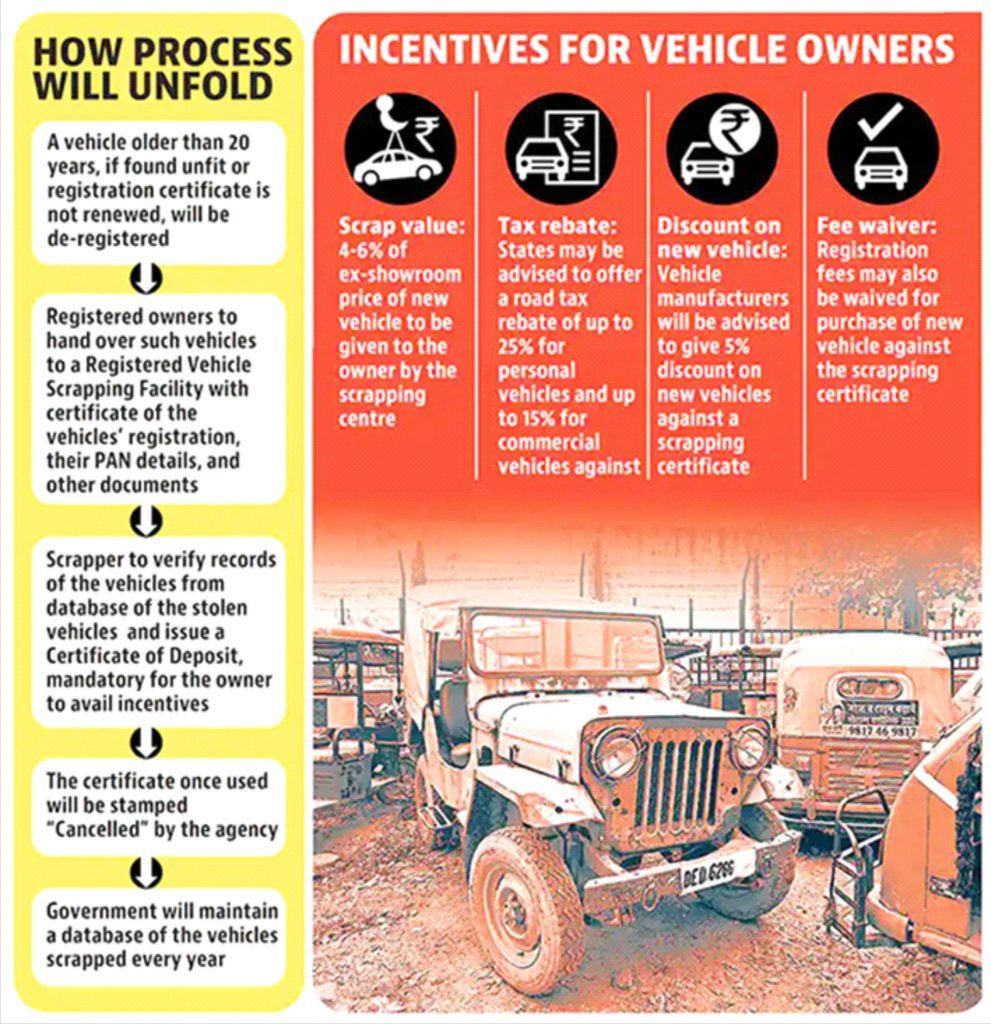
Ningbo Port
Indian Express
GS 1 : Geography
Context:
- In what could potentially threaten global supply chains and impact maritime trade, China has partially shut down the world’s third-busiest container port after a worker there tested positive for Covid-19.
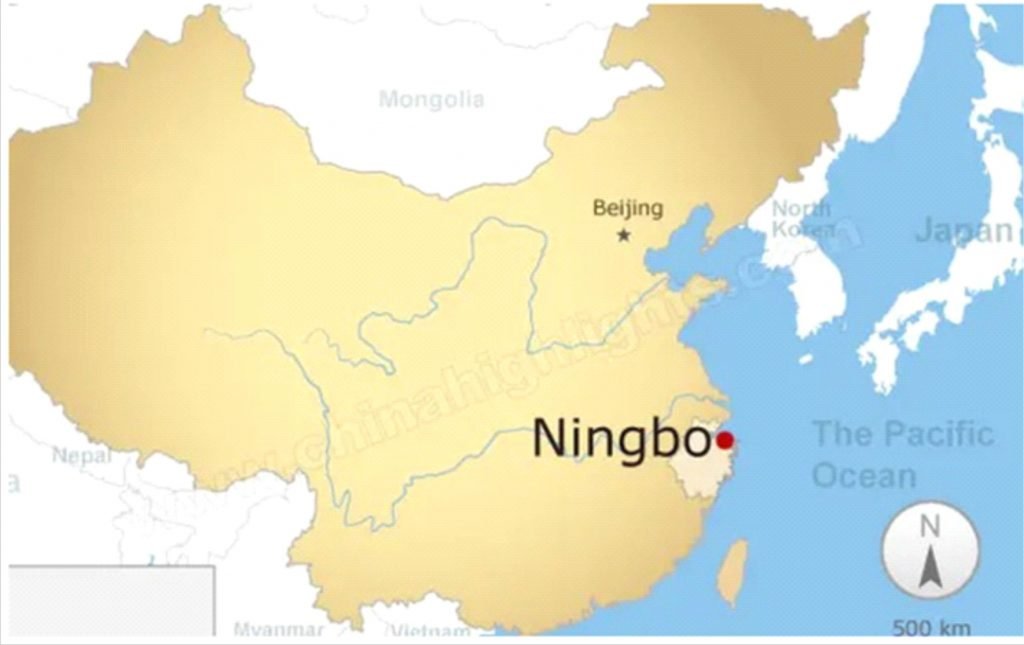
About:
- The Meishan terminal at Ningbo-Zhoushan port, which is south of Shanghai, accounts for over a fourth of the container cargo handled at the Chinese port.
- Meishan terminal mainly services trade destinations in North America and Europe.

